Jeff Healey, despite famously claiming he wasn’t a “gear man,” possessed an unmistakable and unique guitar tone. While his exceptional talent certainly played the primary role, his choice of equipment, particularly his guitar pickups, significantly contributed to his signature sound. For guitarists seeking to understand the nuances of tone, exploring Healey’s gear provides valuable insights into the crucial question: What Are Guitar Pickups and how do they shape your sound?
Jeff Healey’s Guitars and Pickups: A Journey Through Tone
Healey’s career, especially in his early years, was closely associated with Squier guitars. These weren’t just any Squiers; they were Japanese-made instruments from the early 1980s, a period when Fender’s quality control was arguably at a low point in the US. As Rob Quail, Healey’s friend and bandmate, notes, these Japanese Squiers were considered excellent guitars, even preferred over their American counterparts by Healey himself.
Early Guitars and the Quest for Sound
Healey’s first electric guitar was a maple SG copy, but it was his second, a black Japanese Squier Stratocaster, that marked the beginning of his Strat era. He later moved to a red Squier with humbuckers, showcasing an early exploration of different pickup types. His switch to heavier gauge strings after meeting Stevie Ray Vaughan hints at his evolving understanding of how each component, including strings and pickups, affects tone.
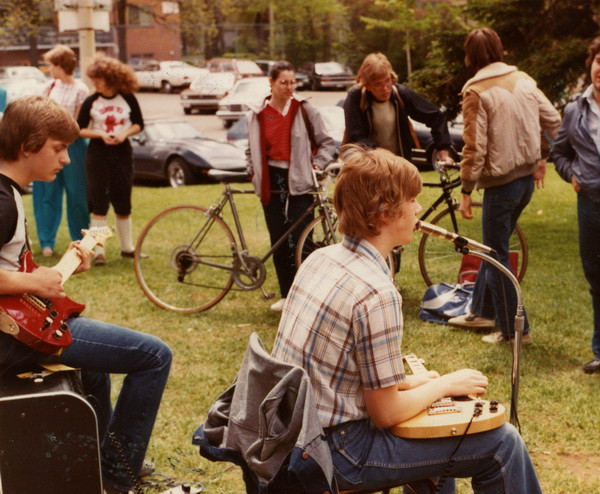 Jeff Healey performing with Blue Direction, showcasing his early guitar days.
Jeff Healey performing with Blue Direction, showcasing his early guitar days.
His adoption of the tobacco-burst MIJ Squier around 1985 solidified his preference for this model. These guitars, particularly the black JV Squiers with red Evans single-coil pickups, became synonymous with his sound during the peak of the Jeff Healey Band. This era, encompassing his first few records and the movie “Road House,” highlights the critical role of pickups in defining an artist’s sonic identity.
Evans Pickups: The Secret Weapon
The pickups Healey favored were not stock Fender pickups but custom-made Evans pickups from Rod Evans in British Columbia. These “Evans Eliminators,” as they were known, were single-coil pickups designed to bridge the gap between traditional single-coils and humbuckers. Jeff Healey himself described them as “the perfect combination of the standard single-coils and the humbuckers,” praising their “wonderful” sound.
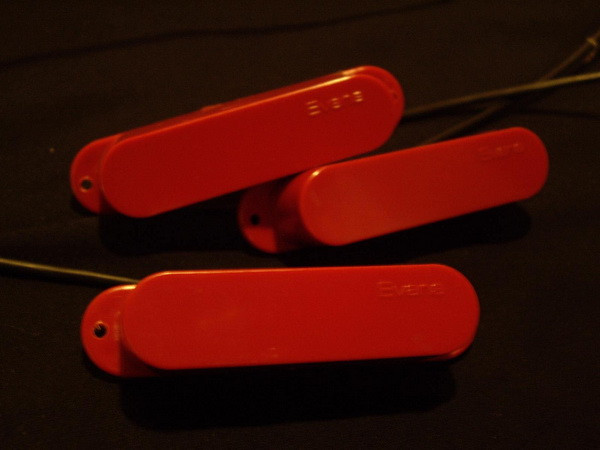 Close-up of Evans Eliminator pickups, highlighting their construction and design.
Close-up of Evans Eliminator pickups, highlighting their construction and design.
Rob Quail emphasized the “fat” sound and high output of the Evans pickups, crucial for Healey’s high-gain, high-volume stage sound. Crucially, they were designed to minimize noise and hum, a necessity given Healey’s massive gain levels. Standard Strat pickups, prone to noise, would have been impractical for his setup. This underscores a fundamental aspect of guitar pickups: they are not just about capturing sound, but also about managing noise and optimizing the signal for amplification.
Humbuckers and Later Guitars
While famous for his single-coil equipped Squiers, Healey also experimented with humbucker pickups later in his career. His Jackson doubleneck, used before adding a second guitarist to his touring band, featured humbuckers. Later, from around 1999, he transitioned to custom-shop Squier guitars with three humbucking Evans pickups (later Seymour Duncan SH-5s).
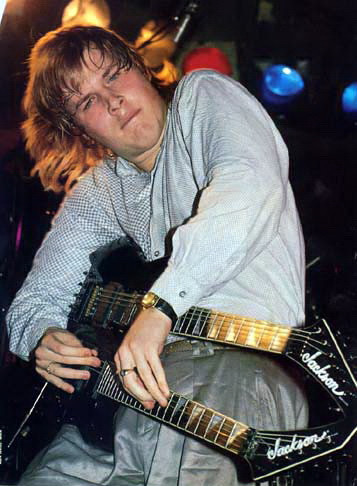 Jeff Healey playing his Jackson doubleneck guitar live, showcasing a different pickup configuration.
Jeff Healey playing his Jackson doubleneck guitar live, showcasing a different pickup configuration.
These later guitars showcased his desire for tonal versatility. The complex wiring in these custom Squiers allowed him to coil-tap individual humbuckers, effectively switching between humbucker and single-coil sounds. This pursuit of tonal flexibility illustrates how understanding different pickup types expands a guitarist’s sonic palette.
Understanding Guitar Pickups: Types and How They Shape Your Sound
So, what exactly are guitar pickups and why were Healey’s choices so important? Guitar pickups are transducers that convert the mechanical vibrations of guitar strings into an electrical signal, which is then amplified to produce sound. They are essentially magnets surrounded by wire coils. When the strings vibrate, they disturb the magnetic field, inducing a current in the coils. The design and components of a pickup drastically influence the resulting tone.
Single-Coil Pickups: Clarity and Brightness
Single-coil pickups, like the Evans Eliminators Healey initially favored, are known for their bright, clear, and articulate tone. They typically have a wider frequency response, capturing a broader range of tones. This clarity makes them ideal for genres like blues, country, and rock and roll where note definition and dynamic response are crucial. However, single-coils are also more susceptible to noise and hum, especially at high gain settings, which Evans pickups were specifically designed to mitigate for Healey.
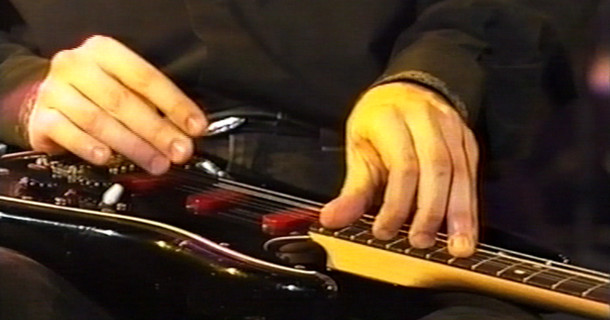 Diagram illustrating the basic construction of a single-coil guitar pickup.
Diagram illustrating the basic construction of a single-coil guitar pickup.
Humbucker Pickups: Warmth and Power
Humbucker pickups, on the other hand, are designed to “buck the hum” – reduce noise. They achieve this with two coils wired in reverse polarity and phase. This configuration cancels out much of the noise while producing a thicker, warmer, and more powerful tone compared to single-coils. Humbuckers are favored in genres like rock, hard rock, and metal where a heavier, more sustained sound is desired. Healey’s later use of humbuckers reflects a move towards a different tonal character, perhaps for specific musical contexts or simply evolving personal preference.
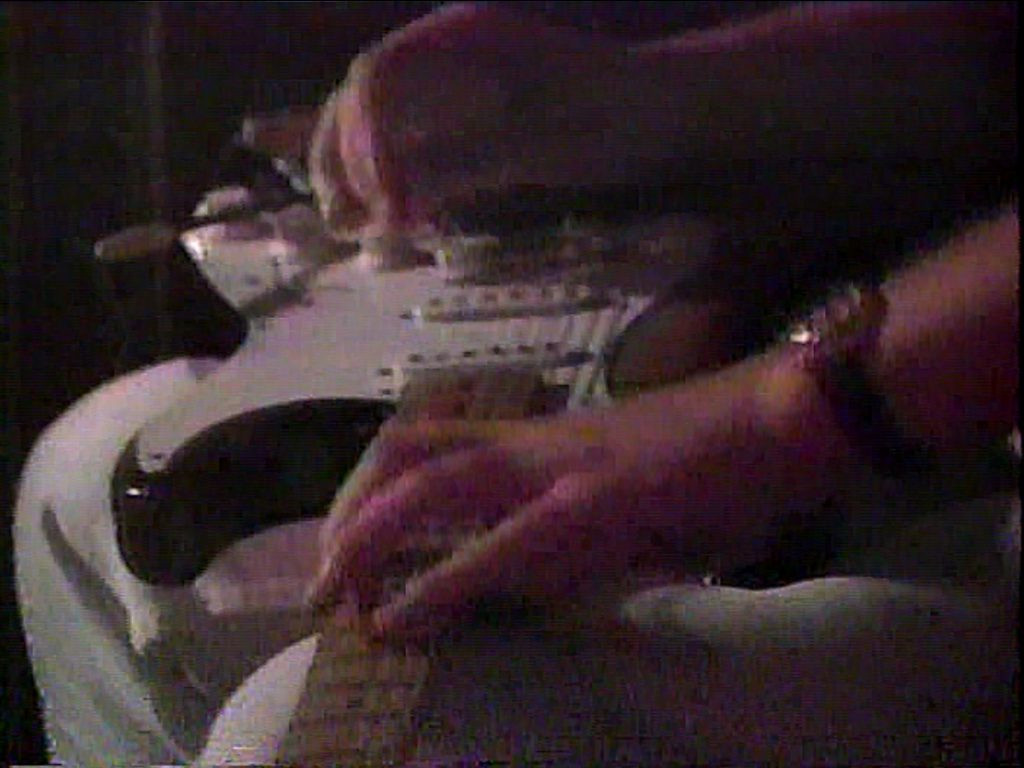 Diagram showing the construction of a humbucker pickup with its dual-coil design.
Diagram showing the construction of a humbucker pickup with its dual-coil design.
Amps and Pedals: Completing the Tone Equation
While pickups are fundamental, they are just one part of the guitar tone equation. Jeff Healey’s amps and pedals further shaped his sound. He favored loud, clean amps like Fender Twins and Marshall heads, deriving his overdrive and distortion from pedals. His use of DOD and later BOSS pedals, including overdrive, EQ, compressor, and chorus, demonstrates how pickups interact with effects to create a complete tonal palette. His preference for setting his EQ pedal primarily as a “make it louder” pedal highlights his focus on pushing the signal and maximizing gain, a strategy that required pickups capable of handling such intensity without excessive noise.
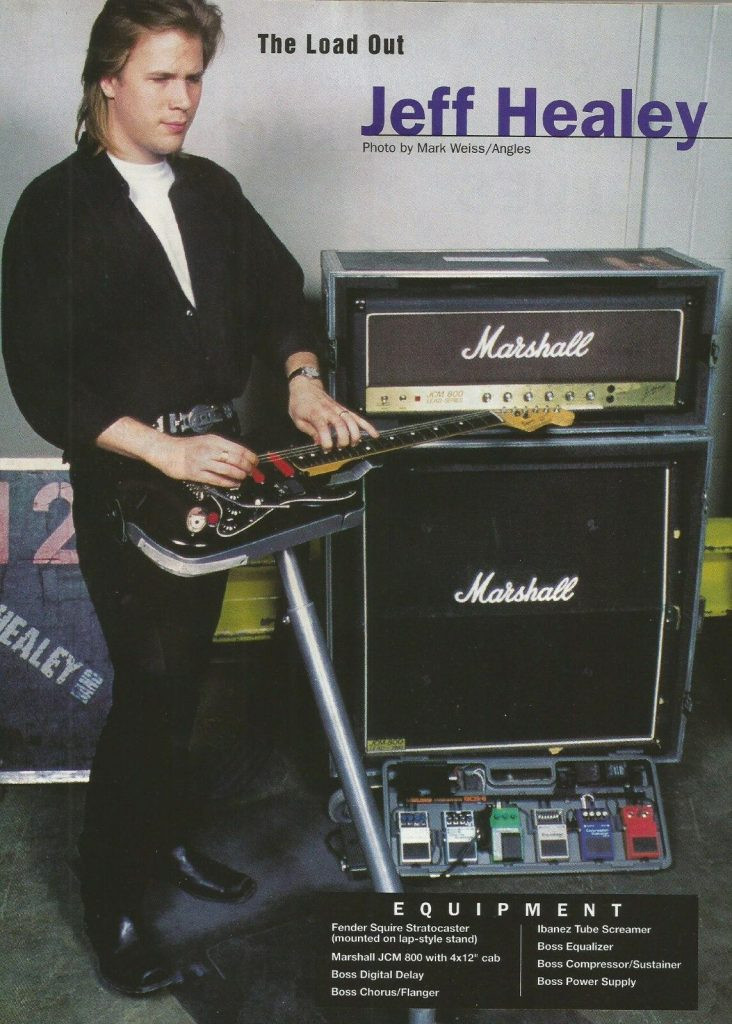 Jeff Healey's pedalboard setup, showcasing the array of effects that contributed to his signature tone alongside his pickup choices.
Jeff Healey's pedalboard setup, showcasing the array of effects that contributed to his signature tone alongside his pickup choices.
Conclusion
Jeff Healey’s journey through guitars and pickups reveals the profound impact these components have on a guitarist’s tone. From his early Squiers with custom Evans single-coils to his later humbucker-equipped guitars, his choices reflect a deep understanding of how pickups shape sound. For anyone asking “what are guitar pickups,” Healey’s gear serves as a practical example. They are not merely passive components; they are the voice of the electric guitar, capturing string vibrations and translating them into the sounds that define genres and inspire generations of musicians. Understanding guitar pickups is essential for any guitarist seeking to sculpt their own unique and expressive voice.
